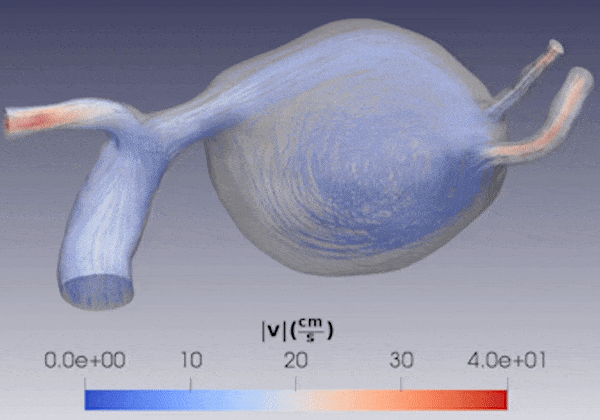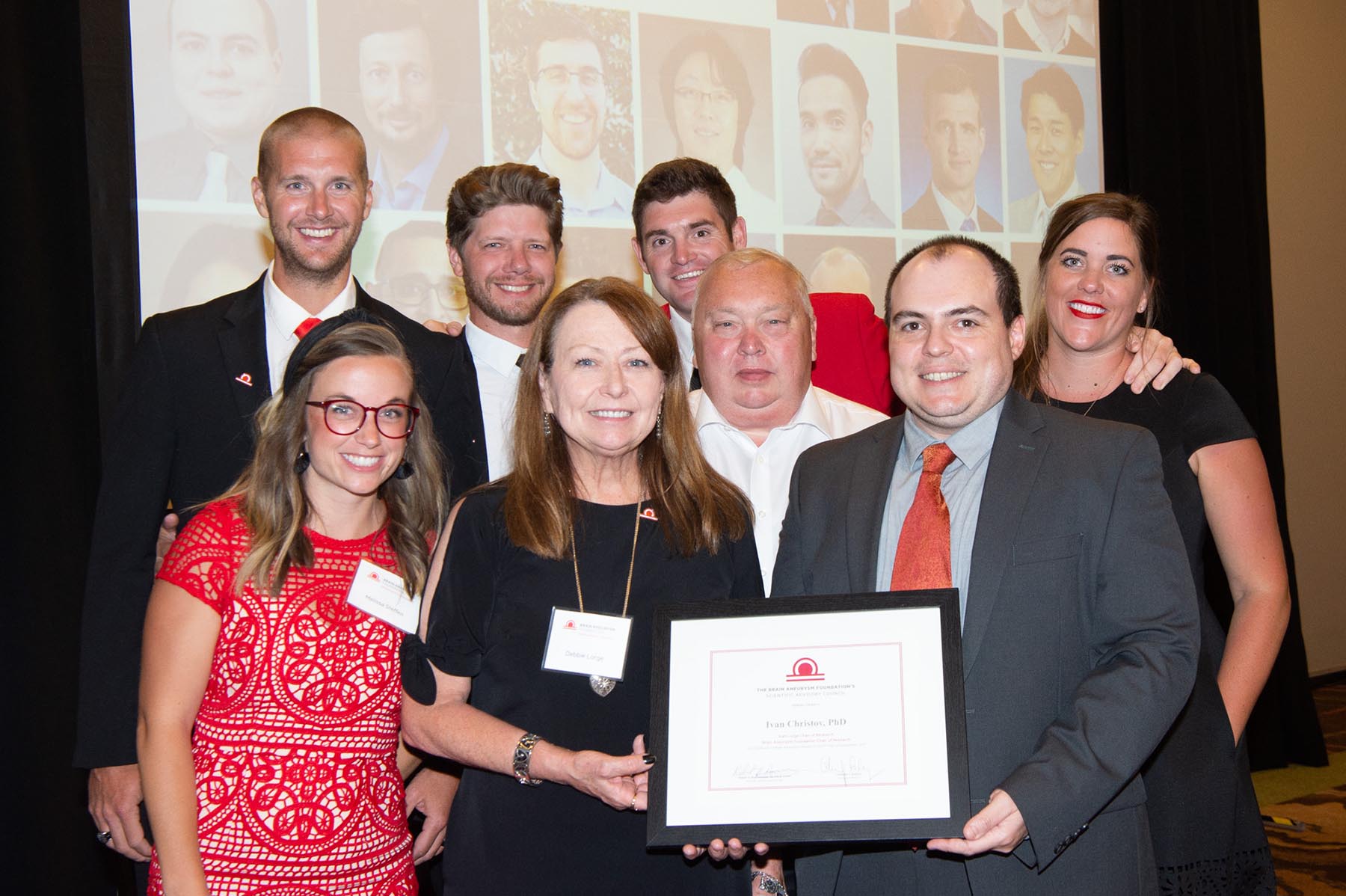Can engineering help to diagnose brain aneurysms?

“Aneurysms present a difficult issue for doctors,” said Vitaliy Rayz, associate professor of biomedical and mechanical engineering. “Patients often aren’t symptomatic, so many don’t even know they have them. Cerebral aneurysms are often incidentally detected during imaging exams, such as CT [computed tomography] and MRI [magnetic resonance imaging]. The real question is: how can we determine when an aneurysm will remain unchanged, or is likely to enlarge and needs to be treated to prevent a rupture?”
Rayz had already been conducting research on cerebral aneurysms, developing patient-specific computational fluid dynamics models of aneurysms from MRI data. He found the perfect collaborator in Ivan Christov, assistant professor of mechanical engineering, who specializes in numerical simulations of complex fluid flows, particularly in soft materials like blood vessels. Together, they focused on using a combination of computational solid mechanics and computational fluid dynamics to capture aneurysm behavior. This coupling of the flow and vessel wall modeling provides a comprehensive analysis of biomechanical factors potentially affecting aneurysm growth and rupture.
In 2018, they began to recruit a team. They advised one of Purdue’s first ever Gilbreth Fellows, postdoctoral researcher Dr. Kimberly Stevens Boster, who worked on modeling fluid-structure interactions. They started a collaboration with Dr. Aaron A. Cohen-Gadol, professor of neurological surgery at the Indiana University School of Medicine, who provided the team anonymous patient imaging data and diagnostic insight. “This collaboration came at just the right time,” said Christov. “Our engineering expertise combined with Dr. Cohen’s medical expertise built a strong foundation for this project.”
“The mechanics of cerebral blood vessels is very complex,” said Tanmay Shidhore, a mechanical engineering Ph.D. student in the Computational Interdisciplinary Graduate Program co-advised by Christov and Rayz, who analyzed the medical images and ran numerical simulations. “You have to know the vascular anatomy and how to interpret clinical data, but you also have to have a fundamental understanding of fluid-structure interactions. Combining all of that knowledge allows us to successfully create a model in the computer.”
Shidhore’s models show 3D renderings of an aneurysm from initial baseline imaging data. They compute the blood velocities in the aneurysms throughout the cardiac cycle. Combining observation of the fluid flow with the deformation of the vessel walls, and comparing these observations with follow-up imagery, the team is able to pinpoint specific areas of concern, which are more susceptible to growth.
“It’s one thing to build fundamental models of how blood vessels generally behave,” said Christov. “It’s another to take clinical imaging data and convert that into a patient-specific computer model to predict how that one individual’s blood vessels may adapt to different flow conditions.”
To add to the difficulty, there are many factors that contribute to severity of aneurysms in different patients (family history, medications, etc.) But the team found a clever workaround to control for these factors. They have chosen to study a cohort of patients who have multiple aneurysms. By comparing the biomechanical properties of the more stable aneurysms against the ones which are more concerning, the team are able to self-control for all other factors, and isolate important data that can be helpful for diagnosis.
“Predicting aneurysm progression is still very challenging,” said Rayz. “We’re not yet at the point where we can give an accurate prediction of how these blood vessels will behave. But with the data from these computer models, we are giving doctors another tool in their toolbox, which they can use to better evaluate treatment options.”
A personal connection
In September 2021, Christov presented their early findings at the 15th annual Brain Aneurysm Foundation Research Symposium in Scottsdale, Arizona. The organizers, the private non-profit Brain Aneurysm Foundation, also awarded Christov a seed grant from the Kati Lorge/Black Heart Traveler’s Chair of Research to continue his work.
For Christov, receiving the award in person was different from presenting at any other scientific conference. “Everyone at this event had a personal connection to someone with an aneurysm,” he said. “The donors who gave our award are actual family members of someone who died at a young age from an aneurysm. I even had the chance to meet survivors of aneurysms. I don’t usually get the chance to see the personal impact of my work face-to-face, so this event was very enlightening.”

Writer: Jared Pike, jaredpike@purdue.edu, 765-496-0374
Source: Ivan Christov, christov@purdue.edu, 765-496-3733
Vitaliy Rayz, vrayz@purdue.edu, 765-494-0159
